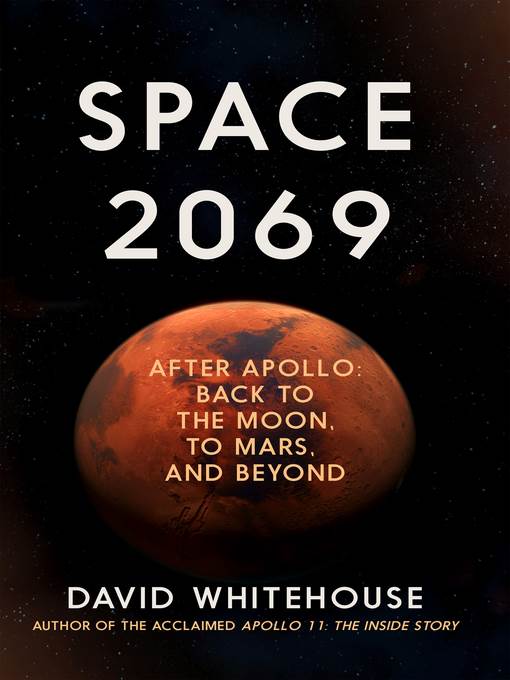
Space 2069
After Apollo: Back to the Moon, to Mars, and Beyond
کتاب های مرتبط
- اطلاعات
- نقد و بررسی
- دیدگاه کاربران
نقد و بررسی

August 17, 2020
Science journalist Whitehouse (Apollo 11: The Inside Story) forecasts what awaits the American space program over the next 50 years in this vivid outing. After NASA’s heyday during the Kennedy and Johnson administrations, Whitehouse writes, lack of political will on the part of later administrations stalled further progress for decades. However, over the past 20 years, the Artemis program has come together: a plan to put astronaut boots on the moon, and ultimately Mars, via a “Lunar Gateway” space station. Artemis builds on information gathered during previous lunar missions, notably the evidence of water ice on the moon found in 2009. Bolstered by both international and commercial allies, NASA is newly optimistic about establishing permanent research stations and colonies beyond Earth, using new and theorized technologies such as 3-D printing and a device for producing oxygen from Martian carbon dioxide. However, Whitehouse takes care to show that the American space program still faces plenty of issues, from the psychological stresses of space travel, to the competition presented by China’s program. He wraps up with a whirlwind tour of other targets for exploration, including Jupiter, Saturn, and their moons. Space fans will find plenty to spark their imaginations.

Starred review from August 15, 2020
Expert speculation on the next 50 years of space travel. Former BBC science correspondent Whitehouse has done his homework, so technically savvy readers will find little to quarrel with, and there is no chance that his predictions will be worse than those following the Apollo missions. During the exhilaration of the 1969 moon landings, most observers believed that the possibilities for space travel were endless. Older space buffs will remember when, in 1972, Richard Nixon cancelled further Apollo flights and junked the rockets and capsules. No human has been back to the moon since, but the ice is breaking. NASA's scheduled return to the moon in 2028 seems guaranteed because Congress voted to fund the mission. Donald Trump's 2019 announcement that he wants the landing in 2024 thrilled space buffs, including the author. However, that will require more money, which neither the president nor Congress seems interested in providing. Whitehouse delivers a skillful history of space exploration, paying special attention to the moon and emphasizing problems solved during Apollo and those that still require solutions in order to establish a permanent base. By 2069, he predicts that an international moon base will be up and running. In his scenario, there will also be a separate Chinese base. The author reminds readers that the U.S. banned China from participating in the space station and forbade NASA researchers from collaborating with that nation's space scientists. China has an energetic space program, and Whitehouse does not doubt that the Chinese plan to avenge that insult. A realist, Whitehouse emphasizes that, without a major breakthrough in rocket technology, travel to Mars will test the limits of human endurance and willingness to bear the expense. His forecast for 2069 is a struggling 18-man international base on Mars. China will have its own. A fine overview of the past and future of human space exploration.
COPYRIGHT(2020) Kirkus Reviews, ALL RIGHTS RESERVED.

























دیدگاه کاربران